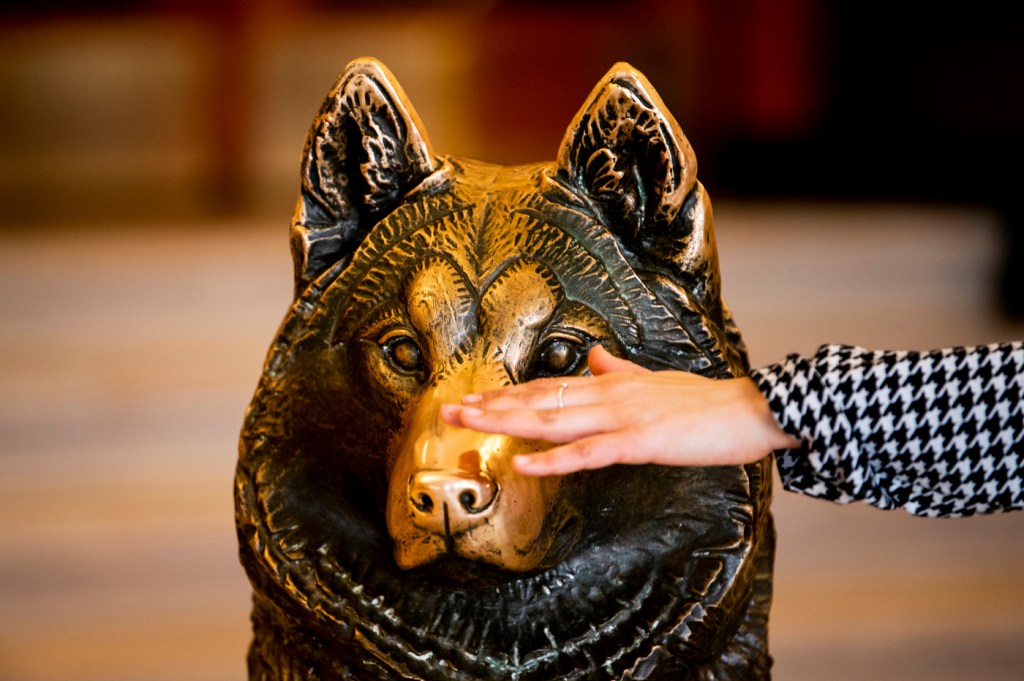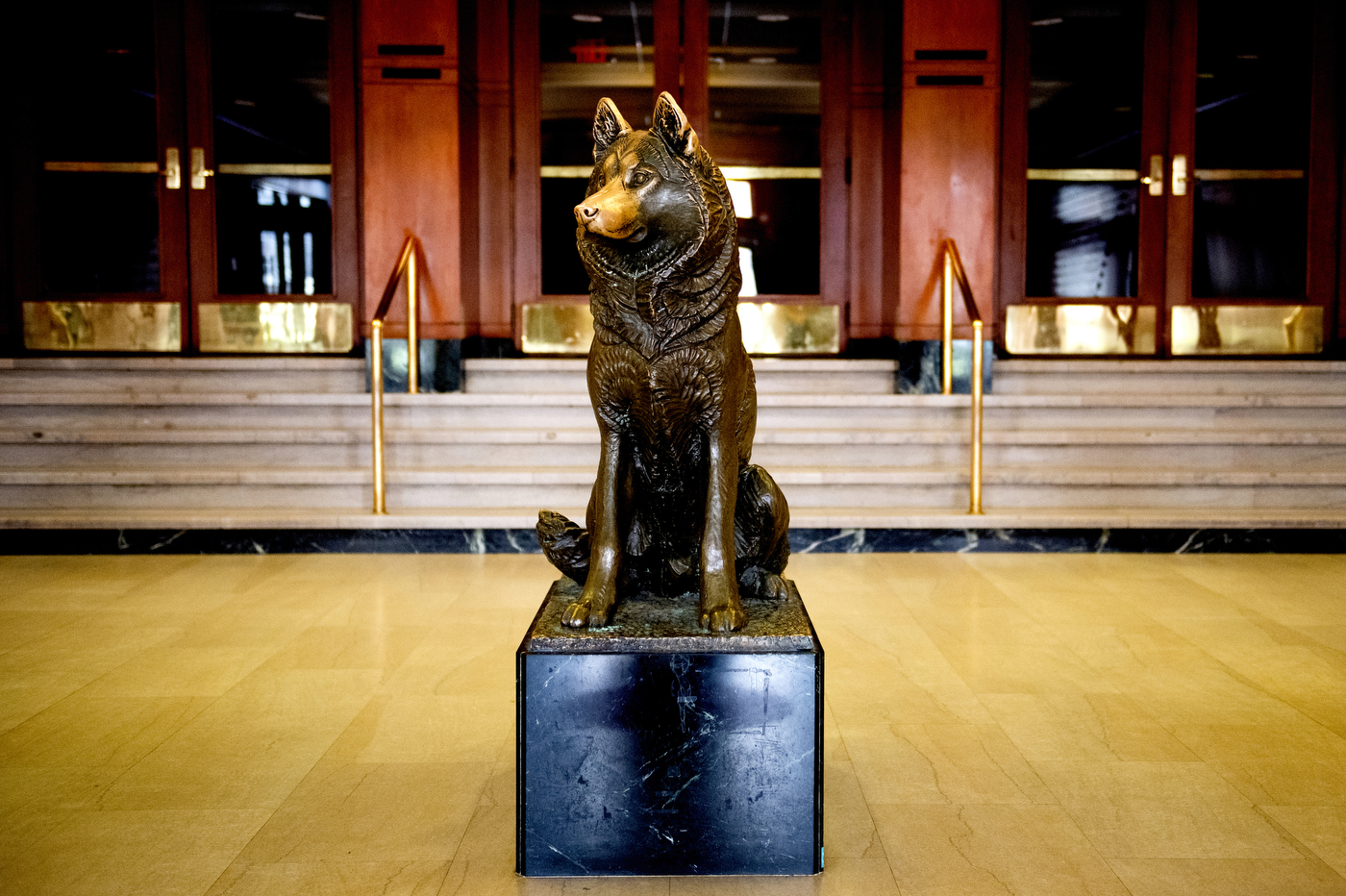The legend of the Husky statue

All generations pay tribute to King Husky eventually. Students from years gone by. Current students rushing to the next class. Future students who have yet to be admitted or enrolled—Northeastern tour guides lead them and their parents past the statue that has watched over the Ell Hall lobby for 60 years.
“Students come by and rub the nose on their way out,” says Helena Spofford, a third-year student whose co-op with student orientation and family programs provides her with a daylong view of the King Husky statue. “And then I see tourists come through and the tour guides explain the lore behind rubbing the nose for good luck.”
Asa Knowles, president of Northeastern, helped with the public unveiling of King Husky in 1962. The sculptors, Adio di Biccari and Arcangelo Cascieri, were commissioned as the result of an extended fund drive. Daniel Lynch Jr., the 1962 senior class president, was on hand.
“It was a senior class gift,” Lynch says from his home in Westfield, New Jersey. “I believe we put $3,000 to $4,000 into the statue.”
Lynch enrolled at Northeastern after serving two years in the Army. It was a different time. He played varsity baseball and basketball and was voted class president for three straight years. His first co-op advisor was Kenneth G. Ryder, who would serve as university president from 1975 to 1989. It was at Northeastern that he met his wife, Betty Lynch.
“She was the senior prom queen, and the prom band was The Ray Flanagan Band of Renown,” Daniel Lynch says, breaking into an easygoing laugh. “I don’t know how I remember that, but I do remember it cost [the senior class] a lot of money.”

The 1962 birth of King Husky was not such a big deal at the time, Lynch recalls, which is why he waited decades to mention his role in it to two of his sons who followed him to Northeastern.
By the time Dan Lynch III enrolled at Northeastern in 1981, the statue had become part of everyday life. He met his future wife, Judi Lynch, in the first week of freshman year.
“Everybody knew about the statue, but I never knew the history of it,” says the younger Lynch, who is vice president of corporate partnerships for the NFL’s New York Giants. “Later, when I learned my father was involved in it, I thought it was kind of cool.”
Judi Lynch recalls the pre-internet tradition of lining up for hours with other students in the quad to sign up for classes. For good luck, they would rub King Husky’s nose in hopes that their chosen courses would be available.
“My good luck was meeting my wife at Northeastern,” says Judi Lynch’s husband.
Most American universities have iconic statues or figures of some kind, and many of them are devoted to sports. At Clemson University, a rock named after a memorable football coach is rubbed by players on their way to the field. A statue of the Nittany Lion has come to represent the teams at Penn State. There are statues of legendary players and coaches standing on campuses across the U.S.
The Husky statue has developed a broader point of view. Northeastern athletes have long rubbed its nose for good luck. But so has virtually everyone else who has passed through campus over the years. It is a focal symbol of the university’s evolving sense of balance: Sports balanced by academics; academics balanced by co-op; the years after college balanced by the desire to continue to learn and grow.
“There were 8,000 or more parking spaces on the Boston campus when I went here,” says Mark Boulter, Northeastern’s senior director for building services, who played football while at Northeastern from 1978 to 1983. “The whole campus has changed since then.”
As Northeastern has evolved, the import of the Husky has only grown.
“I remember rubbing its nose as a student in 1978, hoping for a win on the football field,” Boulter says. “We didn’t win as often as we wanted to back then.”
King Husky’s nose has developed the bright sheen of a magic lamp. The statue has become a place where passersby stop to consider their dream—and how to make it come true.
From her desk facing the Ell Hall lobby, Spofford sees all of the good intentions as the dreamers pass by her desk.
“Oh, yeah, I rub the nose,” says Spofford, in her third year of studying American sign language in theater. “I always rub the nose.”
“So do I,” calls out Lisa Commendatore, director of student orientation and family programs, from her office next door.
Good luck for everyone.
For media inquiries, please contact media@northeastern.edu.






